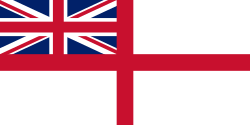Třída Long Island
| Třída Long Island | |
|---|---|
 USS Long Island (CVE-1) | |
| Obecné informace | |
| Uživatelé | |
| Typ | eskortní letadlová loď |
| Lodě | 2 |
| Osud | vyřazeny |
| Nástupce | třída Bogue |
| Technické údaje | |
| Výtlak | 11 800 t (standardní) 15 100 t (plný) |
| Délka | 149,96 m (max.) |
| Šířka | 21,3 m |
| Ponor | 7,67 m |
| Pohon | 1× diesel 8 500 koní |
| Rychlost | 16 uzlů (30 km/h) |
| Dosah | 10 000 nám. mil (19 000 km) při rychlosti 14 uzlů (26 km/h) |
| Posádka | 856 důstojníků a námořníků |
| Výzbroj | USS Long Island (CVE-1): 1× 127mm kanón 2× 76mm kanón 4× 12,7mm kulomet |
| Letadla | 36 |
Třída Long Island byla první třída eskortních letadlových lodí amerického námořnictva z období druhé světové války. Postaveny byly celkem dvě jednotky – USS Long Island (CVE-1) a HMS Archer (D-78). První byla vyřazena v roce 1946, druhá už v roce 1943.
Pozadí vzniku

Postaveny byly celkem dvě jednotky této třídy, pojmenované USS Long Island a HMS Archer a dokončené v roce 1941. Plavidla vznikla přestavbou obchodních lodí MS Rio de la Plata a MS Mormacmail. Další čtyři příbuzná plavidla byla postavena, na základě upraveného projektu, jako třída Avenger.
Konstrukce

Plavidla měla hladkopalubové uspořádání. Dřevěnou letovou palubu s hangárem spojoval jeden výtah. Jedna loď mohla nést až 36 letadel. Obrannou výzbroj tvořily čtyři 127mm kanóny a deset 20mm kanónů. Protiletadlová výzbroj přitom byla průběžně zesilována. Pohonný systém tvořil jeden diesel o výkonu 8500 shp. Nejvyšší rychlost dosahovala 16 uzlů.
Operační služba
Obě jednotky byly nasazeny v druhé světové válce. Žádná nebyla ztracena.
Odkazy
Související články
Literatura
- PEJČOCH, Ivo; NOVÁK, Zdeněk; HÁJEK, Tomáš. Válečné lodě 4. Praha: Naše vojsko, 1993. ISBN 80-206-0357-3. S. 374.
Externí odkazy
 Obrázky, zvuky či videa k tématu Třída Long Island na Wikimedia Commons
Obrázky, zvuky či videa k tématu Třída Long Island na Wikimedia Commons
Média použitá na této stránce
A Brewster F2A-3 Buffalo fighter rests in the flight deck gallery walkway after suffering landing gear failure while landing on board the U.S. Navy escort carrier USS Long Island (AVG-1), off Palmyra Island, 25 July 1942. This plane is from Marine Fighting Squadron 211 (VMF-211), the last U.S. Navy or U.S. Marine Corps unit to operate the F2A in a front-line capacity. Note the marking "MF-5" on the plane's fuselage and very weathered paint. The carrier's SC radar antenna is visible atop her stub mast at right.
Crewmen spotting a Grumman F4F-4 Wildcat on the hangar deck of the U.S. Navy escort carrier USS Long Island (AVG-1), 17 June 1942. Several other F4F-4s are present, as are Curtiss SOC-3A Seagull scout-observation planes. All are from Auxiliary Scouting Squadron 1 (VGS-1).
The U.S. Navy escort carrier USS Long Island (CVE-1) underway in San Francisco Bay, California (USA), on 10 June 1944, photographed by a plane from Naval Air Station Alameda. She has 21 Grumman F6F Hellcat fighters, 20 Douglas SBD Dauntless scout bombers and two Grumman J2F Duck utility planes parked on her flight deck. The ship is painted in Camouflage Measure 32, Design 9A.
The Flag of the United States Navy, as defined in Executive Order 10812 of April 24, 1959. The design is described there as:
The flag for the United States Navy is 4 feet 4 inches hoist by 5 feet 6 inches fly, of dark blue material, with yellow fringe, 2½ inches wide. In the center of the flag is a device 3 feet and 1 inch overall consisting of the inner pictorial portion of the seal of the Department of the Navy (with the exception that a continuation of the sea has been substituted for the land area), in its proper colors within a circular yellow rope edging, all 2 feet 6 inches in diameter above a yellow scroll inscribed "UNITED STATES NAVY" in dark blue letters.
The U.S. Navy flag is used for display purposes at ceremonies, parades, and other public functions where the U.S. Navy has an official presence, usually being carried by an honor guard on ceremonial occasions. It is not used for outdoor, fixed (permanent) purposes, and is not flown on Navy ships. Versions without fringe and different dimensions seem to be common, though it appears they are not technically the official U.S. Navy flag, as the executive order has not been amended.
Prior to 1959, the Navy Infantry Battalion flag was used to represent the U.S. Navy.
For more information, see the Navy's flag history page, SeaFlags, Flags of the World, U.S. Navy document NTP 13(B) [1], section 1710, and Navy regulation OPNAVINST 10520.1 (which replaced a similar SECNAVINST 10520.2D regulation from 1974).




